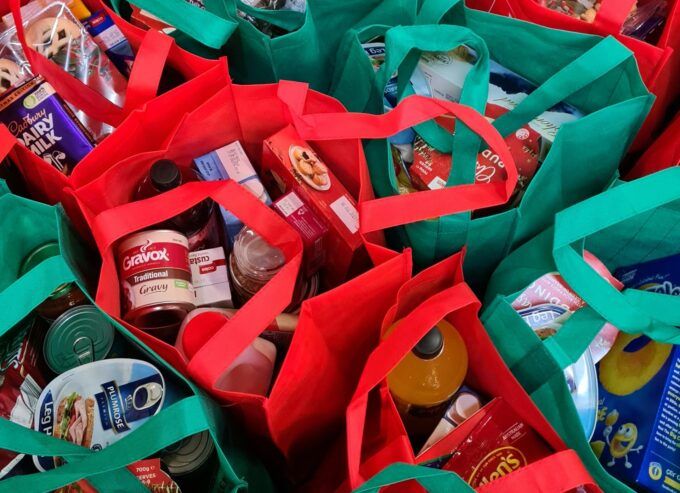Mapping the Solidarity Economy

Photo by Nico Smit
In July 2024, the Council Office of Financial Analysis (COFA) reported that Chicago, Illinois, was witnessing a struggling job market, a decrease in multifamily housing starts, and a rise in single-family home prices. The following month, the City of Chicago’s 2025 Budget Forecast projected a $982.4 million budget gap for the fiscal year.
Budget gaps can often result in reduced funding for crucial resources like social services and education.
Fortunately, there are numerous solidarity enterprises and mutual aid groups in Chicago that can help ease the brunt of these conditions. For instance, the community and neighborhood development organization Reason to Give offers education, school supplies, clothing, and toys to children and families in need. The nonprofit HighSight provides low-income high school students with scholarships and academic support, and the Sol House Cooperative’s mission is to “provide affordable homeownership opportunities on Chicagoʼs Northwest Side to socially conscious individuals who want to share in decision-making and property management responsibilities within a cooperative enterprise.”
While speaking about the effective change “hyperlocal organizations” bring, Daniel Ash of the Chicago Community Trust told the Reader in 2021, “These formal and informal networks that are centered around mutual aid are almost, by definition, more nimble because of their size and scale… And when you’re close to an issue, when you see people in need, there is a sort of innate response to act now.”
The ChiCommons Cooperative, a worker-owned collective that aims to “foster and grow a people-owned solidarity economy,” has created an online map of more than 800 solidarity entities, cooperatives, and associated resources in the Chicago area. Similar to New York’s Seeding Solidarity and the nationwide Solidarity Economy Map and Directory, ChiCommons’s map points viewers to local housing collectives, food co-ops, worker collaboratives, credit unions, and other mutual aid-based groups. Its users can search by co-op category, zip code, city, or neighborhood.
Besides helping Chicago residents find community and resources, this map is valuable to groups and individuals working to develop co-ops. Steve Ediger, founding co-owner and acting president of ChiCommons, explains that consulting and incubation services can use it to learn “who is in the universe of cooperatives in Chicago and what they’re doing.”
The map also serves as a regional resource for Find.coop, an international solidarity map curated by the Data Commons Cooperative.
Anyone interested in using ChiCommons’s directory as a model for a similar project can access its source software on the developer platform GitHub. “We’re very willing to talk to folks about what we’ve done and what our experience has been with the map,” Ediger notes.
Between 2010 and 2012, the Institute of Cultural Affairs laid the groundwork for the solidarity map by creating Accelerate77, a list of organizations promoting sustainability throughout Chicago’s 77 community areas. In 2012, a sharing economy hub called the Chicago Time Exchange worked with the solidarity economy news source Shareable to create a map of shareable resources in the Chicago region. In 2016, two ChiCommons worker-owners used data from Accelerate77, Shareable, and other lists of local solidarity groups to create an early version of what would eventually become ChiCommons’s solidarity map.
Explaining the importance of the solidarity economy, Shareable states that it “is a global movement to build a world that centers people and the planet rather than maximizing private profit and endless growth.”
According to Ediger, the first version of ChiCommons’s map contained between 400 and 600 entries. “Some were cooperatives, some were associated resources, some solidarity entities: things like community gardens, farmers markets, urban forums, worker co-ops, bicycle co-ops, housing co-ops, credit unions, mutual aid folks—all of the folks that are associated with the co-op and solidarity ecosystems.”
Service Providers
Besides the solidarity map, ChiCommons has created the communications platform BlockShare. “It’s trying to provide the last-mile internet service to underserved communities,” Ediger explains. Recipients of this service join the ChiCommons Cooperative as consumer-owners. Blockshare provides people with individual servers, enabling them to organize their communities and “share their garden produce, time, talents, tools, and rides with each other,” Ediger states.
ChiCommons’s website notes that while the Chicago area is “a dynamic crossroads of cultures, commerce, and innovation,” it “also has legacy problems of inequality, disinvestment, and exclusion. Too often, existing institutions have ignored whole geographic, demographic, and generational segments of our communities, including access to technology and life’s necessities.”
An analysis by the University of Chicago’s Data Science Institute, based on responses received between 2014 and 2019, found that while approximately 80 percent of Chicago’s households are internet-enabled, up to 40 percent of households in the city’s least connected communities lack internet access. “Most disconnected households in Chicago are on the city’s South and West Sides,” the study states.
Co-operators
ChiCommons sustains itself by providing paid business and technology services to small businesses, nonprofits, cooperatives, and solidarity entities. For instance, the collective designed and implemented all the required technology for the grocery co-op Wild Onion Market, including its computers, network, internet connections, point-of-sale infrastructure, security cameras, and printers. ChiCommons also offers strategic planning and facilitation for prospective co-op founders.
Worker-owner Paul Bowman, who is developing a booking and management system for the Interpreters’ Cooperative of Madison, describes his position at ChiCommons as “an opportunity to be directly involved in cooperative work.” Worker-owner Alvyn Walker says he enjoys “the opportunity to collaborate with other people in a non-hierarchical environment” and the autonomy that self-employment brings.
Ediger, one of roughly 35 residents of a sustainability-oriented commune called the GreenRise Intentional Community, feels the most rewarding aspect of his involvement with ChiCommons is the sense of community it provides. “What I like, what gives me energy, is working toward common goals with like-minded people,” he notes. “I practice my cooperativism on a daily basis. I shop, bank, and work at co-ops.”
This article was produced by Local Peace Economy.

No comments:
Post a Comment